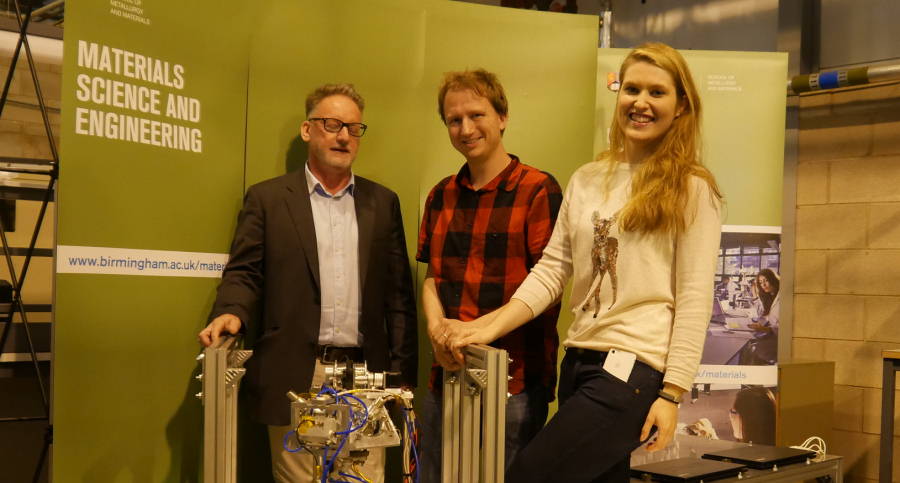
Researchers at the Net Shaping Centre in the School of Metallurgy and Materials at University of Birmngham are developing equipment to explore the possibilities of 3D printing metal components in space within the ESA funded PhotAM research project.
Currently, if a component breaks whilst in space, such as a bracket or hinge, rectifying the issue can, according to the researchers, be problematic, costly and potentially dangerous. With the International Space Station (ISS), replacement parts can be launched from earth. However, as human space exploration looks further afield, it becomes less and less feasible to send ‘spares’ from home. The development of 3D printing in space will allow astronauts to solve this problem by efficiently manufacturing replacement, while current research could potentially mean that some equipment could be produced entirely in space.
The center is developing strategic partnerships with companies involved in the design and build of engine and air-frame components. This will involve sharing research into new materials and production processes for aircraft components and finding ways to minimise energy use in manufacture whilst also reducing overall weight.
Zero gravity
In order to test the viability of the PhotAM system, members of the Advanced Materials & Processing Laboratory (AMPLab) research group are also testing the prototype equipment in the artificial weightlessness of parabolic flight. Using specially equipped aeroplanes, scientists experience reduced gravity in order to conduct scientific and technological investigations, testing whether the equipment can operate successfully under zero-gravity conditions and thereby examining its validity.
Academics in the school are also looking into the uses of titanium, aluminium and nickel super alloy structures to challenge current industrial practices.
This research is funded by and in collaboration with the European Space Agency (ESA).
This story is reprinted from material from the University of Birmingham, with editorial changes made by Materials Today. The views expressed in this article do not necessarily represent those of Elsevier.



